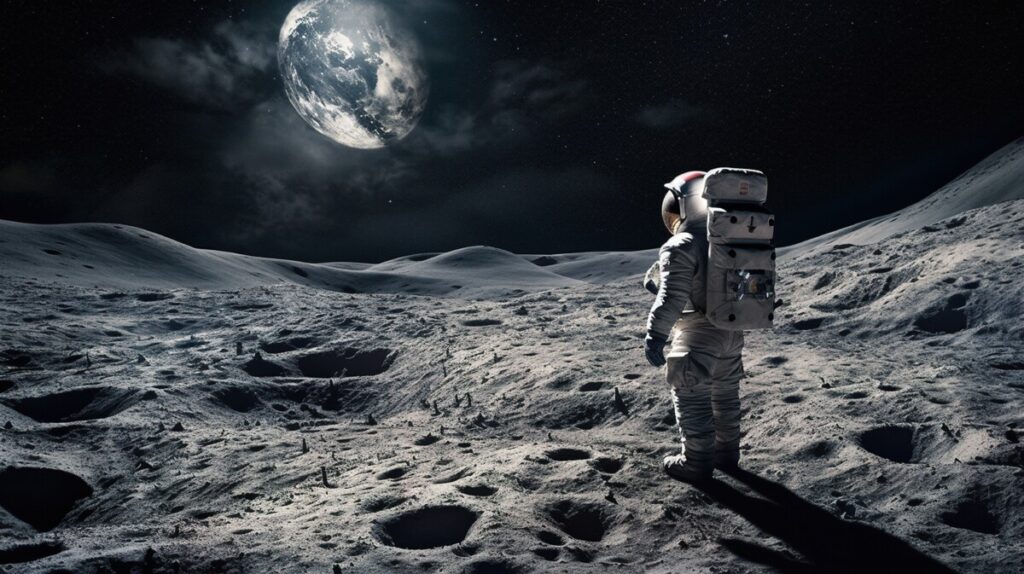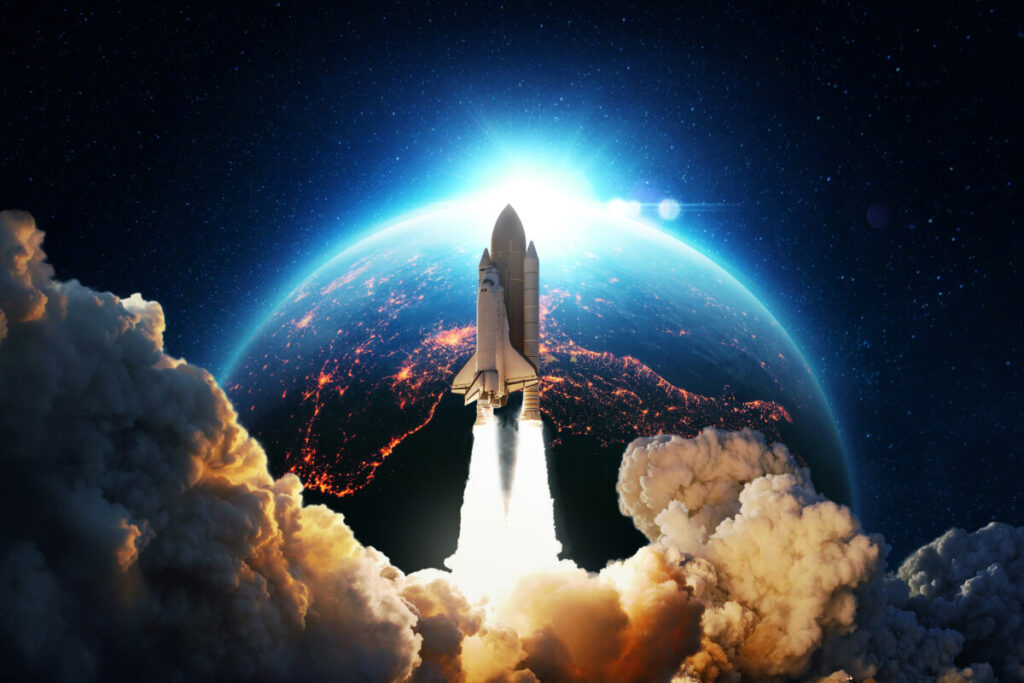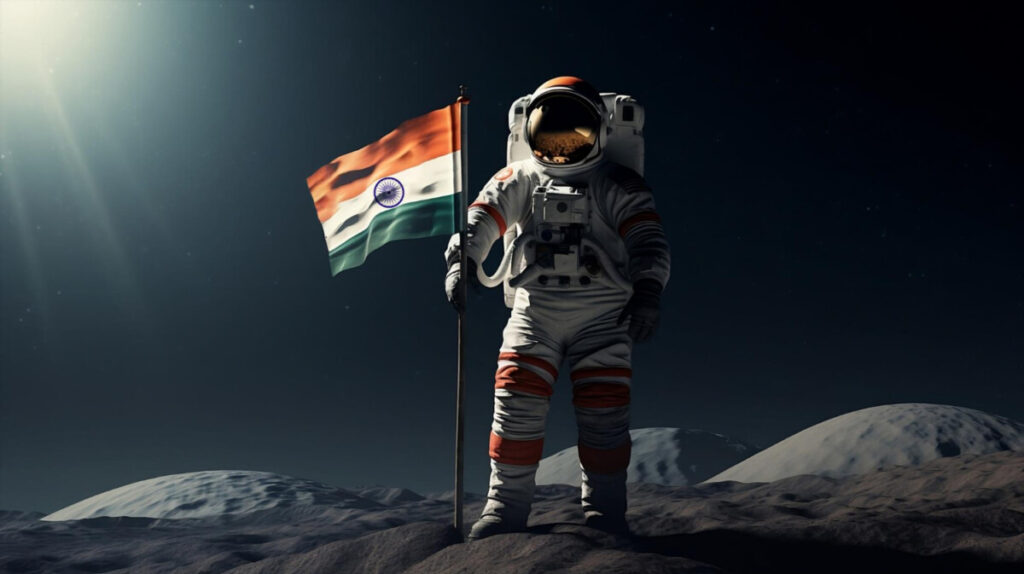What India’s Chandrayaan 3 Mission is?
Chandrayaan 3 is India’s third mission to the Moon. It’s a space exploration project led by the Indian Space Research Organisation (ISRO). The primary goal of Chandrayaan 3 is to continue studying the Moon, building on the success and lessons learned from India’s previous lunar missions, Chandrayaan 1 and 2.
If the Chandrayaan 3 mission succeeds, India will become the fourth country to achieve a soft landing on the lunar surface, following the US, Russia, and China.
Chandrayaan 3 consists of a lander (Vikram), a rover (Pragyan), and a Propulsion Module, carrying scientific payloads to conduct experiments to help scientists better understand the moon.
➡️ In this blog, we will discuss the Chandrayaan 3 mission in depth, including its objectives, features, importance for India and mission updates.

The Purpose Of The Chandrayaan-3 Mission Is
- To demonstrate a soft and safe landing of a lander and rover on the lunar surface.
- To demonstrate rovers roving on the moon.
- To perform in-situ experiments on the moon using the rover.
Chandrayaan-3 Features
- Advanced Scientific Payloads
- High-Resolution Imaging Systems
- Precise Soft Landing Technology
- Robust Communication Infrastructure
- Global Navigation Systems
- Collaborative International Efforts
- Resource Exploration Tools
- Extended Operational Life
- Possible Robotic Rover
- Redundancy and Reliability
- Adaptability to Discoveries
Earlier Chandrayaan Missions
Chandrayaan 1 (2008): India’s inaugural moon mission launched in 2008 using a Polar Satellite Launch Vehicle (PSLV). It discovered lunar water before losing communication in 2009 after two years of operation.
Chandrayaan 2 (2019): Launched in July 2019 by the GSLV launch vehicle, Chandrayaan 2 aimed for a soft lunar landing. Despite Vikram lander’s communication loss, the orbiter continues to operate, making significant discoveries such as water molecules on the moon and observing microflares.
These missions mark India’s achievements in lunar exploration, revealing crucial insights into the moon’s composition and characteristics.
The Indian Space Mission Chandrayaan 3 Comes In
After the failure of the Vikram lander in the Chandrayaan 2 mission, once again, ISRO planned the Chandrayaan 3 mission to prove their expertise in safe landing and roving on the moon’s surface.
According to ISRO, the total cost of building Chandrayaan-3, including the mission budget, was under Rs. 615 crore or $75 million.

Importance of Chandrayaan-3 for India
The importance of Chandrayaan-3 for India is underscored by multiple factors:
Scientific Exploration: Enhances understanding of the Moon’s surface and features.
Technological Advancements: Demonstrates India’s global space exploration capabilities.
Economic Opportunities: Opens doors for commercial activities in space.
National Pride: Inspires pride through successful and complex missions.
Strategic Significance: Contributes to strategic knowledge and potential applications.
Global Collaboration: Collaborates with international space agencies for shared knowledge.
Resource Exploration Potential: Paves the way for potential lunar resource utilization.
Educational and Research Opportunities: Supports scientific research and education in lunar science and space exploration.
Chandrayaan-3 Mission Updates
Chandrayaan-3 incorporates refinements and improvements informed by the insights gained from the Chandrayaan-1 and 2 missions.
- The legs of the lander were made stronger to ensure it landed safely on the moon, even if it was moving at a speed of 3 m/sec.
- The Chandrayaan-2 lander can change its path when it sees craters or rocks on the moon. So, Chandrayaan-3 has more fuel to make these safety features work better.
- Chandrayaan-3 has more instruments to watch the lander’s speed and make it change direction if needed. One of these instruments, the Laser Doppler Velocity meter, calculates how fast the lander moves.
- Chandrayaan-3 has solar panels on all four sides, while there were only two before. This helps it get sunlight even if it faces the wrong way or rolls on the moon.
- High-resolution images from Chandrayaan-2 helped scientists find a safe landing spot for Chandrayaan-3. They made changes to Chandrayaan-3 to make sure it stays strong and steady on the moon.
India’s Space Exploration Milestones

India’s foray into space exploration has been marked by notable milestones, with a particular spotlight on the Chandrayaan missions.
Here’s a brief overview of India’s achievements:
Aryabhata – India’s First Satellite (1975): India’s space journey began with the launch of Aryabhata, its inaugural satellite, in 1975. This marked India’s entry into the realm of space exploration.
SLV – India’s First Launch Vehicle (1980): The successful launch of the Satellite Launch Vehicle (SLV) in 1980 established India’s capability to deploy payloads into space independently.
INSAT Series – Telecommunication Satellites: The Indian National Satellite System (INSAT) series, initiated in 1982, revolutionized telecommunications, broadcasting, and meteorological services in the country.
PSLV-C11 – Chandrayaan-1 (2008): A significant milestone, Chandrayaan-1 was India’s first lunar probe, and it made a historic discovery of water molecules on the moon’s surface. The Polar Satellite Launch Vehicle (PSLV-C11) successfully carried and deployed Chandrayaan-1.
Mars Orbiter Mission (Mangalyaan) – 2013: India made global headlines with the successful launch of Mangalyaan, its Mars Orbiter Mission, in 2013. India became the first Asian nation to reach Martian orbit and the first nation in the world to do so in its maiden attempt.
PSLV-C37 – Record-Breaking Satellite Launch (2017): The Polar Satellite Launch Vehicle (PSLV-C37) set a world record by deploying 104 satellites in a single mission, showcasing India’s proficiency in cost-effective space launches.
GSAT Series – Communication Satellites: India’s Geostationary Satellite (GSAT) series has strengthened communication capabilities, providing a robust network for telecommunication, broadcasting, and internet services.
Chandrayaan-2 – Lunar Exploration (2019): Building on the success of Chandrayaan-1, Chandrayaan-2 aimed for a more comprehensive exploration of the moon. Though the lander encountered challenges during the descent, the orbiter continued to study the lunar surface.
NavIC – Regional Navigation Satellite System: The Navigation with Indian Constellation (NavIC) enhances navigation and positioning capabilities, bolstering India’s self-reliance in satellite-based navigation systems.
Upcoming Chandrayaan-3 Mission: India’s commitment to lunar exploration continues with Chandrayaan-3, emphasizing technological advancements and objectives such as achieving a soft landing near the lunar south pole.
Conclusion
In short, exploring the moon is vital as it’s a celestial neighbor, and studying its origin aids in understanding the solar system and Earth. The success of ISRO’s Chandrayaan missions underscores India’s prowess in space exploration globally.
With a focus on Chandrayaan 3 mission budget, team, update, and details, India could pioneer a soft landing near the lunar south pole, showcasing its commitment to lunar exploration. This mission aligns with India’s leadership in space, making significant strides in moon research and contributing to our understanding of the cosmos.



